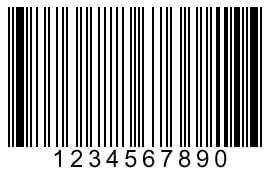Olympiad Test : Fundamentals Of Computer - 1 - Class 7 MCQ
20 Questions MCQ Test - Olympiad Test : Fundamentals Of Computer - 1
Which of the following is an example of mobile computers?
Which is the supercomputer developed in India?
| 1 Crore+ students have signed up on EduRev. Have you? Download the App |
What is the given strips of black lines called?


What device is used for reading cheques in India?
Find the correct statement (s).
(i) Supercomputers are used for weather forecasting.
(ii) Supercomputers are used for rocketing and plasma physics.
(iii) Processing speed of microcomputer lies in the range of 10-30 MIPS.
(iv) Mainframe computers are less powerful than the mimputers.
Which device is used to scan the input and convert it into a computer file?
Which is the device used for checking a multiple answer sheet?
Which card contains a magnetic strip and can store information magnetically?
Which is specially used for printing graphs, maps, and charts?
Which device is used for transferring files to other computers (of the network) without any damage?
What is the result displayed on the monitor called?
Which printer gives output in Braille text?
Which type of plotters use jets of ink instead of ink pens?
Which kind of software performs the maintenance work of computer?
Which of these is an operating system?

















